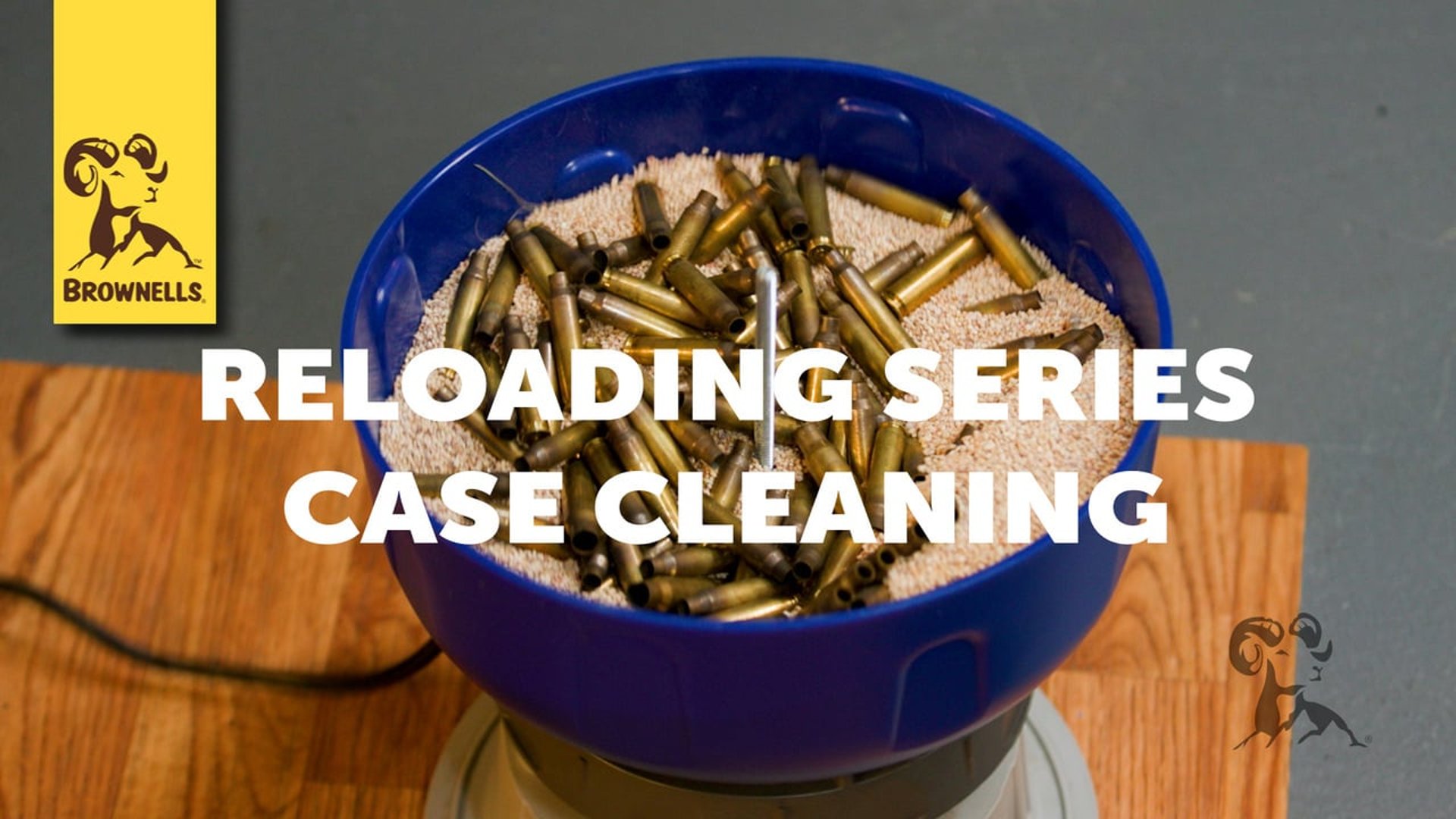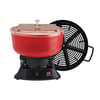Reloading Series: Case Cleaning
Introduction
Hey everyone, Caleb and Steve here from Brownells, and we’re excited to continue our journey into reloading with you. Today, we’re focusing on an important step in the process: cleaning your brass. If you’re new to reloading or if you’ve just picked up a bunch of used brass from the range, you’ll need to clean it before you start loading. In this video, we’ll cover three main methods for cleaning brass: vibratory tumblers, rotary tumblers, and ultrasonic cleaners. Let’s dive in and find out which one is right for you.
Vibratory Tumbler Overview
The first method we’re covering is the vibratory tumbler. This is probably the most common way to clean brass, and it’s what Steve uses himself. Vibratory tumblers, like the one from RCBS that we’re showing today, use a dry media to clean the brass. You fill the tumbler with your brass and media, turn it on, and let it do its thing. Steve points out that the dry media used in vibratory tumblers is often treated corn cob or walnut shells, which help polish the brass to a nice shine. You can also buy untreated media and add polish to it yourself. This method is simple and effective, making it a popular choice for both beginners and seasoned reloaders.
Dry Media Types:
Corn Cob and Walnut When it comes to dry media, you have a few options, like corn cob or walnut shell. Treated corn cob is great for giving your brass a shiny finish, while walnut is a bit more aggressive and better for removing heavy dirt. If you use treated media, it will eventually lose its polishing ability, but you can recharge it with a bottle of polishing compound. One tip Steve shares is to avoid overloading the tumbler. If you put in too much brass, the tumbler can’t circulate properly, and your brass won’t get as clean. Instead, add enough media to fill the tumbler about halfway, and then add brass until it starts to circulate nicely. This will help you get a better clean.
Using a Vibratory Tumbler and Setup Tips
Caleb explains how easy it is to set up a vibratory tumbler. You just pour in your media, add the brass, and turn it on. He likes to leave his tumbler running for a few hours, often setting it up before bed or work. Steve mentions that 2-3 hours is usually enough if the brass isn’t too dirty, but you can leave it longer if needed. Another thing to keep in mind is whether or not to Decap your brass before tumbling. Decapping is the process of removing the primer from the brass. Some reloaders prefer to Decap their brass before tumbling so that the media can clean the primer pockets as well. If you do this, it’s best to use a universal decapping die instead of your sizing die, as it’s easier to clean and won’t damage your dies.
Rotary Tumbler for Wet Tumbling
Next up is the rotary tumbler, which is great for wet tumbling your brass. Rotary tumblers, like the one we’re showing here, work a bit differently from vibratory tumblers. Instead of dry media, you use stainless steel pins and a cleaning solution to scrub the brass clean. This method can get your brass looking almost new, even if it’s heavily tarnished or dirty. Caleb admits that he’s newer to the rotary game, but Steve has been using it for a while and loves the results. With wet tumbling, you get a deeper clean, especially in the primer pockets and inside the cases. It’s perfect for range brass that’s been sitting outside for a while. Using Stainless Steel Pins and Cleaning Solutions To use a rotary tumbler, you start by adding stainless steel pins, water, and a bit of cleaning solution to the drum, along with your brass. Steve likes to use a mix of Dawn dish soap and Lemi Shine for the best results. The Lemi Shine helps to brighten up the brass, but be careful not to use too much, as it can cause discoloration. The stainless steel pins work wonders for scrubbing out all the dirt, even in hard-to-reach places like the primer pockets. After running the tumbler for a few hours, you’ll be surprised at how dark the water is—it really pulls out the grime. Once you’re done, you’ll need to separate the pins from the brass, which can be done using a media separator or simply rinsing everything thoroughly.
Wet Tumbler Setup and Best Practices
Setting up a rotary tumbler is similar to the vibratory tumbler. You fill the drum about halfway with water, add the brass and pins, and let it run. One difference is that you’ll need to seal the drum before starting to prevent leaks. Steve recommends experimenting with how much brass to add—you’ll get a feel for how much to use based on the size of your tumbler and the type of brass you’re cleaning. After wet tumbling, it’s important to dry your brass completely before reloading it. You can air dry it or use a brass dryer. Once dry, you can go back and do a quick vibratory tumble if you want to add extra shine to your brass.

















